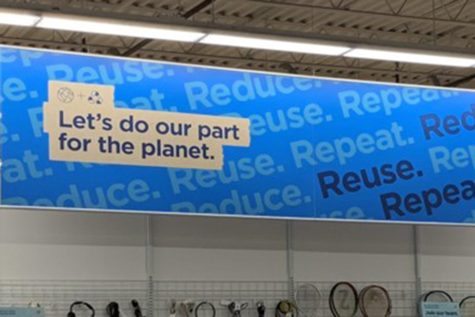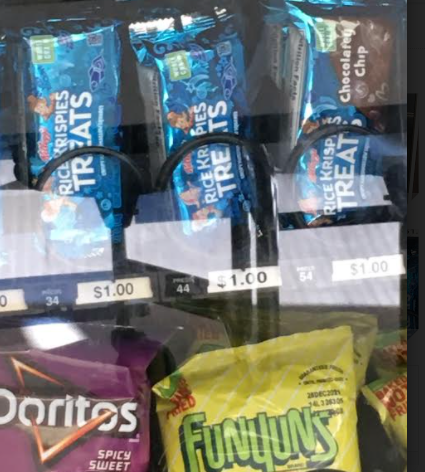Environmental Activist Shines Spotlight on Alternatives to Zoos and Aquariums
An interview with Gaye Taylor, Environmental and Climate Activist, founder of Cool it for the Kids, biodiversity, climate change and sustainability journalist, English professor at Ottawa University, joining us from her home in Ottawa, ON.
ZOOS AND AQUARIUMS
Advocates claim that zoos and aquariums are saving animals, while animal rights activists argue that they do more harm than good. While these establishments provide an opportunity to learn about and see animals, we wouldn’t otherwise have access to, they aren’t always the best habitats for animals to thrive. All over the globe, zoos and aquariums claim to be safe havens for animals. But many animals are being hurt, mentally, physically, and emotionally, in captivity.
“Animals lead complex lives, and a lot of them have an emotional range that would suggest that being in captivity is very hard for them,” said Environmental Activist Gaye Taylor.
According to Taylor, changes and regulations are needed to protect the wellbeing of all animals. Zoos need to become more animal-centric instead of being money-centric. We should try to save animals and help them by combating climate change and standing up for animal rights. We can educate ourselves and others about animals to build compassion for them and, in turn, create new generations of animal activists.
According to World Animal Protection, an animal rights group, having huge belugas, dolphins, whales, stingrays, and other marine creatures in an aquarium is harmful in many ways. On their page detailing U.S. Dolphin Regulations, they describe how the marine creatures do not get enough space to lead lives anywhere close to their normal lives. In the wild, dolphins swim 40- 80 miles a day. However, in captivity, the AWA (Animal Welfare Act) only requires their cage/tank to be 24 feet x 24 feet and 6 feet deep. The AWA aims to protect animals and enforce rules to ensure that they are treated well and can live their best lives possible.
Mentioning an image she once saw of an orangutan at a zoo who had been dressed up in human clothes and made to ride a bicycle, Taylor condemned this scene of humiliation and said that no animal should ever be so trivialized or demeaned.
The idea of touching an animal that is domesticated and has evolved is entirely different from touching a wild animal. It is the same as riding elephants; this harms the animal and can cause anxiety, trauma, sadness, and more. Touching a wild animal is like breaking or taming it and is psychologically harmful and stressful, Taylor said.
In many ways, how animals are treated is only helpful to humans. For example, on a World Animal Protection Page detailing “5 Reasons You Should Never Swim With Dolphins on Vacation,” they explain that when people swim with dolphins, the water is chlorinated to protect the human. The chlorine causes dolphins harm, including burning, blindness, soreness, and stinging. Once again, animal welfare needs to come first. Many people are rough with animals in touch tanks and cause bruising or harm to the animals. Stingrays, which are most popular in touch tanks, according to National Geographic, have a lifespan in the wild of 15-25 years. In captivity, this drops to only 5-10 years. When swimming or touching marine life, you are also removing essential and protective oils from their skin, which harms them.
Taylor suggested that one way to keep zoos and aquariums open would be to boycott touching tanks and animal displays. “The idea of an animal amusement park should be completely removed. Animals are NOT ours to tame, force, or harm.”
Many investigations all around the globe have shown the harm that is caused to animals in captivity. One such animal is known as “The World’s Loneliest Elephant.” According to CNN, this elephant lived in extremely poor facilities, which caused severe loneliness, lack of exercise, and poor health conditions.
Many people go to animal amusement parks for the WRONG reason. Seeing and experiencing animals is a privilege that is more important than the food or rides that can be experienced elsewhere, explained Taylor. The animals are what matter most, and when looking at many zoos, aquariums, and animal amusement parks, the educational compassion-fostering environment is not evident.
According to the Animal Studies Repository, “There remains no compelling evidence for the claim that zoos and aquariums promote attitude change, education, or interest in conservation in visitors”.
RESCUES AND SANCTUARIES.
Rescues and sanctuaries are amazing ways to protect animals. The purpose of a sanctuary is to have a protected area inside of the animal’s natural habitat. One example would be an elephant sanctuary in South Africa to prevent elephants from being killed for ivory. These sanctuaries have hundreds of acres and do not keep animals in captivity. The only difference between the animal’s natural habitat and a sanctuary is that sanctuaries are protected and help to stop extinction or harm. Elephant sanctuaries in South Africa have guards stationed around hundreds of acres to protect elephants from poachers. These sanctuaries provide safe habitats to animals while still giving them freedom.
Rescues, on the other hand, save animals from unsafe zoos, aquariums, breeders, owners, or natural or man-made disasters. Rescues do involve some captivity. Still, their purpose is to save animals, not to provide humans with entertainment. They are focused on rehabilitating animals until they can be released to their habitat.
Overall, rescues and sanctuaries are great alternatives to zoos and aquariums. Though not as public, they do normally have educational tours for people to learn.
A commonly heard argument in favor of zoos and aquariums is that they are good for animals because they help stop extinction by protecting and breeding animals. Taylor argues that protecting animals and saving them from extinction are the definitions of rescues and sanctuaries. Without zoos, Taylor said, animals would not go extinct because rescues and sanctuaries can also fulfill this task. The panda is a good example of this. Though zoos did have a role in bringing the panda population higher, it was mostly done by sanctuaries and rescues.
Going to see animals should be a special experience with the purpose of learning. The animals should only be in captivity if they need to be in the first place for medical or conservatory reasons, explained Taylor. Sanctuaries and rescues are a better alternative to zoos in many ways because they are built to help and preserve animals as well as inform the public.
NEW APPROACHES
Zoos.
Taylor believes that zoos need to become more like sanctuaries and rescues. Instead, Taylor suggests they need to focus more on the animals. They also need to make sure that they provide an educational experience that is building compassion for animals. One way to do this would be to have fewer animals, at the most 100. In contrast, the Toronto Zoo has 5,000 animals representing 500 species. Simply reducing the number of animals could ensure people are spending time with each animal, truly educating themselves and properly fostering compassion. Zoos could spotlight certain animals each week and have educators teaching people who come to the zoo. These changes would make sure that people connect to the animals. The animals at these facilities should only be there if they have to for medical or preservation reasons.
Aquariums.
Aquariums are very human-focused. Taylor explained that putting huge animals in small habitats and training and taming them to do specific tasks is not okay. She feels adamant that animals are not here to be used by humans. She suggests alternatives such as visiting rescues and sanctuaries, snorkeling, and going to beaches as alternatives to seeing marine animals in captivity. Taylor argues that these alternatives will provide a much more special experience.
Animals need to be protected, and in many cases, that is not being prioritized by zoos, aquariums, animal circuses, and marine parks. It is important to educate yourself before deciding to visit an animal. If you decide that you would like to support more rescues and sanctuaries, see the links below,
Sanctuaries across the USA – for an education and compassion building experience
Best Friends Animal Sanctuary in Utah. This is one of the largest no-kill sanctuaries in America, at around 3,700 acres. This sanctuary rescues animals from shelters where they were not treated well. They have horses, pigs, dogs, cats, goats, rabbits, and much more. The Link: https://bestfriends.org/
- Elephant Sanctuary in Tennessee. This sanctuary rescues elephants who have lived their lives in captivity in circuses or zoos and provided them with a herd and open area as well as individualized care to help them overcome their traumas. The Link: https://www.elephants.com/
- Proud Spirit Horse Sanctuary in Georgia. This sanctuary has rescued hundreds of neglected and abused horses over the years and also has donkeys, pigs, dogs, and cats. The Link: https://horsesofproudspirit.org/
- Farm Sanctuary in New York. They help farm animals. You can hear about the animals’ stories if you visit the website or sanctuary and learn about how farm animals are treated on some farms. The Link: https://www.farmsanctuary.org/
- Chimp Haven in Louisiana. This sanctuary provides a safe haven for animals who have been the subjects of testing for research. They have tons of chimpanzees. The Link: https://chimphaven.org/
- Goats of Anarchy in New Jersey. You can not visit this sanctuary to keep the animals safe, but you can volunteer, read the owner’s book, or donate. The Link:https://www.goatsofanarchy.org/
- Skylands Animal Sanctuary in New Jersey. They rescue animals from slaughterhouses and neglect. Here is the Link: https://skylandssanctuary.org/
- Home for Life in Wisconsin. Home for Life is a home for unadoptable dogs and cats. They do not kennel or cage their dogs and have around 40 acres for the dogs and cats to play. The Link: https://www.homeforlife.org/
- Howling Woods Wolf Dog Rescue in New Jersey. They help wolfdogs, a hybrid between dogs and wolves, because of myths preventing them from being legal in many states. They work to stop these myths and provide a home for these wolfdogs. The Link: https://howlingwoods.org/
- Peaceful Valley Donkey Rescue in Texas. They help and heal donkeys who were neglected, abused, or abandoned. They have operations across the U.S. and are the biggest donkey rescue in America. The Link: https://donkeyrescue.org/
Video From Cool It For Kids:







